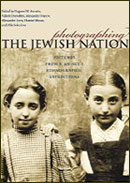Photographic Memory

Several months ago, an article in the New York Times revealed that a much-venerated collection of images of pre-war East European Jewry, shot in the 1930's by the photographer Roman Vishniac, constituted a tendentious slice out of a much larger and more variegated body of work. In a 1947 book and later in the 1983 album A Vanished World, Vishniac himself, it seems, selected and captioned his images in such a way as to put forward a highly sentimentalized picture, retroactively suppressing the rich human diversity of his subjects and depicting them instead as uniformly poor, pious, and persecuted.
The Vishniac episode, pitting the complex reality of East European Jewish life against a photographic imagination fixated on tropes of exoticism and impending extinction, offers a visual equivalent of what, in literature, the critic Michael André Bernstein has called "foreshadowing." This is the tendency of some writers to portray all of pre-war European Jewish life as a prelude to the inevitability of the Holocaust. Yet a recently published book, based on a much earlier photographic project, points to the possibility of a different angle of vision altogether.
Photographing the Jewish Nation brings together more than 170 images from the three ethnographic expeditions to the Russian Pale of Settlement undertaken between 1912 and 1914 by Shloyme Zanvl Rapoport, known to history as S. An-sky (1863–1920). Best remembered as the author of The Dybbuk, An-sky was a restless intellectual whose flight from the shtetl and decades spent in revolutionary and literary work would later give way to determined efforts to reconnect with his past, alleviate Jewish suffering, and forge a new national identity that might take the place of religious faith. In his expeditions, he was accompanied by Yuli Engel, a musicologist, and by Solomon Yudovin, a brilliant young photographer who was also An-sky's nephew and, at the time, just barely out of his teens.
By gathering written, oral, and visual materials and physical objects, An-sky sought not only to capture a culture and way of life already approaching the vanishing point. He also aimed to harvest a people's collective memory. His purpose, as one of the book's editors puts it, was political: "the education of the [Jewish] people by the establishment of various ties between the intelligentsia and the masses, and thereby the creation of the Jewish nation."
An-sky, in other words, had an agenda, but one that, unlike Roman Vishniac's, was transparent. He, too, intended to offer his images as authentic representations of Jewish life, piety, and poverty. But his was an authenticity acutely aware of its historical time and place, as well as of the new cultural uses to which his ethnographic researches were to be put. As for us, An-sky's latter-day viewers, our awareness of this element of self-consciousness rescues the human beings staring out at us through the camera's lens from the constrictions of nostalgia and kitsch. It also establishes our connection with them, in all their concreteness and uneven light, and in the inevitable partiality of our own vision.
Comments are closed for this article.




